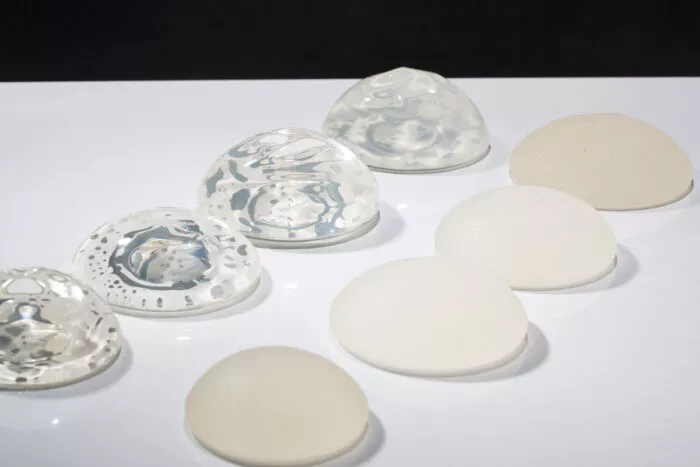The decision to undergo breast augmentation is a significant one, often intertwined with considerations of aesthetics, confidence, and personal well-being. While the transformative effects of breast implants are well-known, a crucial aspect that individuals contemplate is the longevity of these enhancements. How many years do breast implants last, and what factors contribute to their lifespan? This comprehensive exploration navigates the intricacies of breast implant durability, shedding light on the key determinants, considerations for different implant types, potential lifespan variations, and emerging trends shaping the landscape of breast augmentation.
Understanding Breast Implants
Breast implants, the cornerstone of breast augmentation procedures, come in various types, each with its unique composition, characteristics, and considerations. The two primary categories are saline implants, filled with sterile salt water, and silicone implants, filled with silicone gel. Understanding the composition sets the stage for delving into the factors influencing the longevity of these implants.
Determinants of Breast Implant Longevity
Implant Type: The choice between saline and silicone implants significantly influences longevity. Saline implants are generally associated with a simpler structure and may have a straightforward lifespan. Silicone implants, with their cohesive gel filling, are designed for durability and a more natural feel.
Quality of Implants: The quality of implants plays a pivotal role in determining how many years they last. Opting for high-quality implants from reputable manufacturers can contribute to longevity and reduce the risk of complications.
Surgical Technique: The skill and precision of the surgeon during the implantation procedure impact the long-term outcome. A well-executed surgery minimizes the risk of complications and contributes to the implants’ longevity.
Body Changes and Aging: The natural aging process and changes in body composition over time can influence the appearance and feel of breast implants. Understanding these changes is crucial in managing expectations regarding the lifespan of breast enhancements.
Maintenance and Care: Diligent postoperative care and adherence to medical advice contribute to the sustained health and longevity of breast implants. Regular check-ups, mammograms, and addressing any concerns promptly are integral aspects of implant maintenance.
Implant Rupture or Leakage: While modern implants are designed for durability, the risk of rupture or leakage exists. Regular monitoring and prompt intervention in case of any issues can mitigate the impact on longevity.
Lifestyle Factors: Individual lifestyle choices, including physical activity, weight fluctuations, and pregnancy, can impact the longevity of breast implants. Communicating these factors with the surgeon allows for personalized guidance.
Saline Implants
Saline breast implants, known for their simplicity and adjustability, are often perceived as having a more straightforward lifespan. The sterile salt water filling poses minimal risks in case of leakage, as the body can safely absorb the saline. While they are generally durable, individuals opting for saline implants may consider periodic checks for any signs of deflation.
Silicone Implants
Silicone breast implants, characterized by a cohesive gel filling, are designed with durability in mind. The cohesive nature of the gel minimizes the risk of leakage and contributes to a more natural look and feel. Silicone implants are often associated with a longer lifespan, and advancements in implant technology continue to enhance their durability.
Lifespan Variations
The lifespan of breast implants is not uniform for all individuals, and variations exist based on factors such as implant type, surgical techniques, and individual differences. While some individuals may enjoy the aesthetic benefits of breast implants for several decades, others may consider implant revision or removal after a certain period.
Decades of Transformation
Advancements in medical technologies and implant materials contribute to the evolving landscape of breast augmentation longevity. Modern implants are designed to withstand the test of time, with silicone implants often exhibiting durability for two decades or more. Ongoing research and innovations in implant technology aim to further enhance longevity, providing individuals with sustained benefits from their breast augmentation journey.
Navigating the Decades
First Decade: The initial decade post-implantation is often characterized by the implants settling into a natural position, and individuals enjoying the aesthetic benefits. Regular check-ups and adherence to postoperative care guidelines contribute to a positive experience.
Second Decade and Beyond: Silicone implants, known for their longevity, can continue to provide aesthetic enhancements well into the second decade. While individual variations exist, discussions about long-term considerations, potential changes, or revision options may arise during this phase.
Revision or Removal: Some individuals may opt for implant revision or removal after a certain period, influenced by factors such as changes in aesthetic preferences, life circumstances, or evolving health considerations. Open communication with healthcare professionals guides individuals in making informed decisions.
Future Considerations and Evolving Perspectives
As the landscape of breast augmentation continues to evolve, future considerations encompass a holistic approach to well-being. Emphasizing the connection between physical and mental health, emerging perspectives recognize the transformative impact of breast implants on self-esteem, body image, and overall confidence. Integrating these considerations into discussions about breast implant longevity fosters a comprehensive understanding of the enduring benefits of breast augmentation.
Informed Decision-Making
The journey of breast augmentation, including considerations of longevity, is a highly personal one. Consulting with experienced healthcare professionals, including board-certified plastic surgeons, allows individuals to make informed decisions aligned with their goals and expectations. Open communication, realistic expectations, and personalized guidance contribute to a positive and satisfying breast augmentation experience.
Conclusion
The question of how many years breast implants last intertwines with the broader narrative of personal transformation, confidence, and well-being. While individual experiences may vary, the durability of modern breast implants, coupled with evolving technologies, positions breast augmentation as a transformative journey with enduring benefits. Empowered by knowledge, individuals can navigate the considerations of breast implant longevity, make informed choices, and embrace the transformative impact of breast augmentation on their lives.

